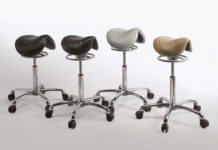Which of the following is not a clinical feature of candidiasis?
Candidiasis can present clinically with pseudomembranous white plaques that can be wiped away, erythematous often accompanied with a burning sensation, and angular cheilitis where the candida remains within the fissures at the corner of the mouth.
Reticular presentation is mostly associated with lichen planus.
Gonsalves, W.C., Chi, A.C., Neville, B.W. Common oral lesions: Part I. Superficial mucosal lesions. Am Fam Physician. 2007 Feb 15; 75(4): 501-7. PMID: 17323710. Retrieved from https://www.aafp.org/afp/2007/0215/p501.html
Herpes labialis (HSV) affects 15-45% of the U.S. population.
Herpes labialis affects between 15-45% of the U.S. population. These lesions usually manifest along the vermillion border and can be reactivated by multiple triggers including, UV light, trauma, fatigue, stress, and menstruation.
Gonsalves, W.C., Chi, A.C., Neville, B.W. Common oral lesions: Part I. Superficial mucosal lesions. Am Fam Physician. 2007 Feb 15; 75(4): 501-7. PMID: 17323710. Retrieved from https://www.aafp.org/afp/2007/0215/p501.html
A lesion that is bluish, with fluctuant mucosal swelling, and often with a history of periodic rupture is a:
A mucocele is a bluish, fluctuant mucosal swelling, often with a history of periodic rupture. Mucoceles most often affect young adults and children, although they can occur at any age. It is created by an area of mucin spillage which results from the rupture of a salivary duct. The most common location is the lower labial mucosa, though they can appear at any sight with salivary gland tissue.
Gonsalves, W.C., Chi, A.C., Neville, B.W. Common oral lesions: Part II. Masses and neoplasia. Am Fam Physician. 2007 Feb 15; 75(4): 509-12. PMID: 17323711. Retrieved from https://www.aafp.org/afp/2007/0215/p509.html
Palatal tori are present in 7-10% of the U.S. population. In comparison, mandibular tori are present in 20-35% of the U.S. population.
Palatal tori are present in 20-35% of the U.S. population, whereas mandibular tori are present in 7-10% of the U.S. population. Tori is considered a variation of normal as the lesions are benign and nonneoplastic. Although they have been mistaken for neoplasia in the past, these bony protuberances arise from the cortical plate and do not appear until adulthood.
Gonsalves, W.C., Chi, A.C., Neville, B.W. Common oral lesions: Part II. Masses and neoplasia. Am Fam Physician. 2007 Feb 15; 75(4): 509-12. PMID: 17323711. Retrieved from https://www.aafp.org/afp/2007/0215/p509.html
Oral pathology is used in forensic investigation. The use of enamel rod patterns for identification purposes is called which of the following?
Enamel rod patterns are unique for each tooth and can easily be used for identification purposes; this is called ameloglyphics. This can be done using cellulose acetate film, cellophane tape, or light body impression material.
Shamim, T. Oral Pathology in Forensic Investigation. J Int Soc Prev Community Dent. 2018; 8(1): 1-5. doi:10.4103/jispcd.JISPCD_435_17. Retrieved from https://www.ncbi.nlm.nih.gov/pmc/articles/PMC5853036/
Which of the following systemic diseases are associated with macroglossia?
Amyloidosis is classified into two types, organ-limited and systemic. The systemic form of the disease can lead to macroglossia due to amyloid deposits in the tongue. Nodular lesions appear on the tongue, diffuse enlargement with ulcerations or hemorrhages often follow the development of the nodules.
Gaddey, H.L. Oral manifestations of systemic disease. Gen Dent. 2017 Nov-Dec; 65(6): 23-29. PMID: 29099362. Retrieved from https://pubmed.ncbi.nlm.nih.gov/29099362/
Diffuse swelling, cobblestone appearance of the mucosa, localized mucogingivitis, and deep linear ulcerations are all oral pathology findings associated with which systemic disease?
Often oral manifestations are evident before any other manifestation in Crohn’s disease. These manifestations vary and include diffuse swelling, cobblestone appearance of the mucosa, localized mucogingivitis, and deep linear ulcerations. Tissue polyps, tags, and nodules may be present due to secondary fibrosis. A rather rare oral presentation associated with Crohn’s disease is pyostomatitis vegetans, which is characterized by “serpentine pustules that coalesce in a “snail track” pattern.”
Chi, A.C., Neville, B.W., Krayer, J.W., Gonsalves, W.C. Oral manifestations of systemic disease. Am Fam Physician. 2010 Dec 1; 82(11): 1381-8. PMID: 21121523. Retrieved from https://pubmed.ncbi.nlm.nih.gov/21121523/








